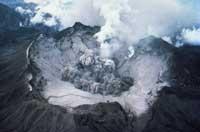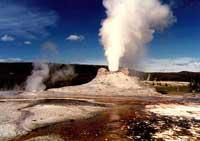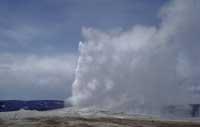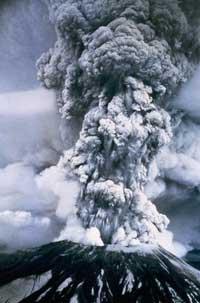Earth, fireplace and whale

Volcanoes and geysers are two magnificent shows that nature offers. Both launch the internal matter with a high pressure and temperature and by a hole similar to the fireplace. The first ones throw the lava and the second throw the water, but not only for the matter they throw, but also for its origin. Volcanoes are indicators of the inner movements of the earth, such as earthquakes, while geysers are just one of the most curious events in the water cycle.
Appearance of an explosion
Sometimes it seems to want to remember that the Earth is moving, just remember the earthquakes of India and El Salvador from this beginning of the year. The land, like the earthquake, also uses the mountains to communicate its movements. And it is that the volcanoes do not occur anywhere, but in the places where two plates of the lithosphere are gathered, which are responsible for the rise of the magma. The knowledge of the exact location has allowed that in the last ten years no victims have occurred by volcanoes and, probably, for this reason, the man has come to appreciate the beauty of these explosions. The time of eruption varies greatly from one volcano to another. You can go from an eruption of a few minutes to an eruption of a few hours, a week, and a continuous activity of years. Surprisingly, the Laki volcano in Iceland suffered a few weeks of eruption and the Etna volcano in Sicily has an eruption of years.

In the case of geysers, on the contrary, the causes of the release of hot water are very different. The geysers have nothing to do with the movements of the earth, they are only curious and spectacular episodes of the water cycle. The water that expels is a precipitation that has been slowly introduced into the interior of the earth through breaks and porous rocks. For the eruption to occur, the column in contact with the air must be filled with water.
In certain areas, when the water begins to boil by touching the hot stones, the water passes from liquid state to steam and the water bubbles begin to rise through the column. The internal pressure and water bubbles raise liquid water and pressure at the bottom of the column slowly lower. Consequently, in the semidisegua column the water is balanced and the eruption stops. You have to fill in the column to relaunch the water and wait until it is heated. Some geyser have between 10 and 15 minutes to fill the water column and have the right pressure and temperature again. Other times the eruptive cycle usually takes about an hour.

However, volcanoes, earthquakes and geysers are associated. In fact, for the formation of the geysers it is necessary to have a water inlet and be in contact with the hot stones that will heat up to the boiling point. It is evident, therefore, that the geysers are conditioned by the variations of the terrestrial surface. When an earthquake occurs, the subsoil structure is modified, modifying the precipitation water input zones and the geyser columns. Likewise, the geyser delimits, at least partially, the activities of the mountains of fire. In fact, to heat the water normally there is a volcano around the geiser.
Some hazardous and other sources of energy
On earth there are only a dozen mountains of fire with continuous activity. Some, after having slept for years or centuries, wake up by chance and are the most dangerous. However, thanks to the care of vulcanologists, since the Pinatubo volcano in the Philippines killed 700 people, there has been no disaster since 1991. In this surveillance all movements of the volcano and soil deformations, as well as temperature variations, electric and magnetic field are measured.

Geysers, on the other hand, do not pose any danger and, thanks to the studies of recent years, are used mainly as a source of energy.
United States, Philippines, South America, New Zealand and Iceland. Geothermal power plants or directly companies or dwellings use heated water in contact with stones to heat it. On the other hand, it is considered that hot water sources, very rich in minerals, are beneficial to health. Often, this water comes from small geisser that pour continuous water. Both for the movements of the earth and for the curiosity of the water cycle, volcanoes and geysers offer spectacular shows. What's more, since it has been learned to measure the risk of volcanoes and since it takes advantage of the geossians.
Published in 7K
Buletina
Bidali zure helbide elektronikoa eta jaso asteroko buletina zure sarrera-ontzian











